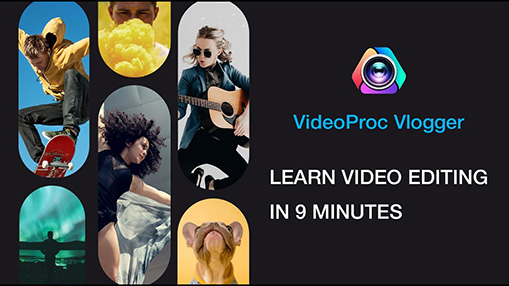Choosing the right video editing software is crucial for achieving your desired results. If you're a Linux user, you may be wondering which software is best suited for your needs. So before we dive into the options for best Linux video editing software, we'll first explore the factors you should consider when choosing a Linux video editing software and provide some tips and recommendations to help you make an informed decision.
1. Level of expertise and experience
One of the first factors to consider is your level of expertise and experience in video editing. Are you a beginner just starting out, or an experienced editor looking for advanced features? Some software options cater to beginners with simplified interfaces and basic editing tools, while others offer a wide range of advanced features for professionals. Determine your skill level and choose a software that aligns with your needs.
2. Type and complexity of video projects
Consider the type and complexity of the video projects you'll be working on. Are you editing short videos for social media, or do you need more robust capabilities for longer videos or films? Different software options excel at different types of projects. For example, some software may have specialized features for color grading or visual effects, while others may focus more on basic editing and trimming. Assess your project requirements and choose software that can handle them effectively.
3. Features and functionalities
Take a close look at the features and functionalities offered by different video editing software options. Common features include timeline editing, transitions, effects, audio editing, and file format support. However, some software may offer additional features like motion tracking, green screen capabilities, or multi-camera editing. Make a list of the features that are important to you and prioritize them accordingly.
4. User interface and ease of use
The user interface and ease of use play a significant role in your overall editing experience. A user-friendly interface can make the editing process smoother and more enjoyable. Look for software with a clean and intuitive interface that allows you to navigate easily and find the tools you need. Additionally, consider whether the software offers keyboard shortcuts or customizable layouts to streamline your workflow.
5. Compatibility and support
Ensure that the video editing software you choose is compatible with your Linux operating system. Check the system requirements and specifications provided by the software developer to confirm compatibility. It's also important to consider the level of support available for the software. Are there online tutorials, user forums, or customer support channels where you can seek assistance if needed?
6. Price and availability
While cost should not be the sole determining factor, it's important to consider the price and availability of the software. Some Linux video editing software options are free and open-source, while others require a one-time purchase or subscription. Evaluate your budget and determine how much you're willing to invest in video editing software. Keep in mind that paid software often offers more advanced features and professional support.
And based on these factors and tips, we will review 9 of the best Linux video editing software options available, so you can choose the best one for your needs. Check them now.
1. Kdenlive
When it comes to video editing on Linux, Kdenlive is a name that stands out. It's a free and open source video editor that is based on the KDE Frameworks and MLT Framework and has gained a strong reputation among Linux users. Why?
One of the key reasons why Kdenlive is popular among Linux users is its user-friendly and intuitive interface. It offers a multi-track timeline, allowing you to work with multiple video and audio tracks simultaneously. The customizable interface allows you to arrange and resize panels according to your preferences. Plus, the clip monitor provides a real-time preview of your edits.
Kdenlive supports a wide range of video formats and codecs, making it a versatile choice for video editing. Whether you're working with MPEG, AVI, QuickTime, or other popular formats, Kdenlive has you covered. It also offers over 100 video and audio effects, including transitions, filters, color correction, and keying. These effects can enhance your videos and give them a professional touch.
More importantly, Kdenlive is packed with powerful editing features that allow you to create impressive videos. You can perform tasks like cutting, trimming, splitting, and combining clips with ease. The software supports up to 16 audio and video tracks, giving you the flexibility to work on complex projects. Additionally, Kdenlive offers a built-in titler, a proxy editing feature for smoother playback, a clip analysis tool, and even a speech-to-text function.
Last but not least, Kdenlive has a large and active community of users and developers. It has been in development since 2002 and has over 1.5 million downloads on SourceForge. The software is compatible with Linux, Windows, and Mac OS, making it accessible to a wide range of users. If you encounter any issues or have questions, you can seek help from the comprehensive online documentation, forum, wiki, and bug tracker.
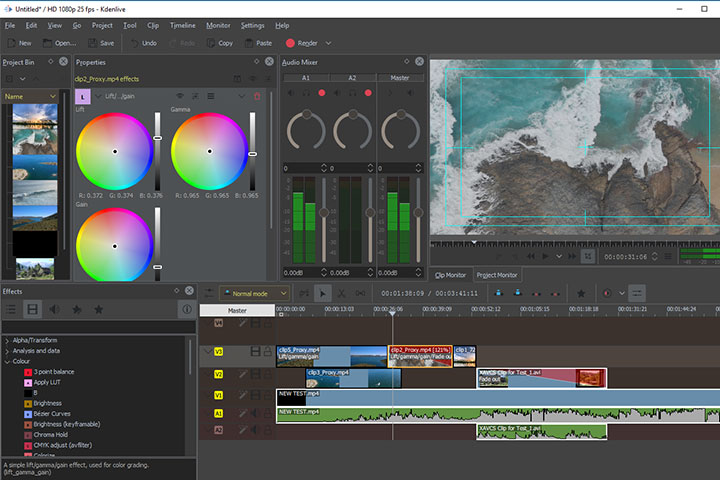
Pros:
- Free and open source: Kdenlive is free to use, which is a huge advantage for users on a budget.
- Powerful and versatile: With its wide range of features and effects, Kdenlive can handle various video editing tasks.
- User-friendly and intuitive: The interface is designed to be easy to navigate, even for beginners.
- Compatible and supported: Kdenlive works on Linux, Windows, and Mac OS, and has an active community for support.
Cons:
- Prone to crashes and bugs: Some users have reported occasional crashes and bugs while using Kdenlive.
- Requires a lot of system resources: Kdenlive can be resource-intensive, so it may not perform well on older or low-spec machines.
- Lacks some advanced features: While Kdenlive offers a solid set of features, it doesn't have some advanced capabilities like motion tracking, 3D animation, and multicam editing.
2. OpenShot
Designed with beginners in mind, OpenShot offers a user-friendly interface that makes video editing a breeze. Whether you're a novice or an experienced editor, you'll find OpenShot's intuitive layout and navigation a joy to work with.
OpenShot takes the hassle out of video editing with its drag-and-drop interface. You can easily import your media files, arrange them on the timeline, and make precise edits with just a few clicks. Furthermore, OpenShot's curve-based keyframe animation allows you to create smooth and dynamic animations for your videos. This feature is particularly useful for adding movement to titles, graphics, and other elements.
OpenShot may be basic, but it certainly doesn't skimp on functionality. It supports all the common video formats and codecs, ensuring that you can work with your preferred file types without any hassle. Additionally, OpenShot offers over 70 video and audio effects, including transitions, filters, titles, and even chroma key for green screen editing. With these features at your fingertips, you can easily add a professional touch to your videos.
Linux users often struggle to find software that is compatible with their operating system. Thankfully, OpenShot is available not only for Linux but also for Windows and Mac OS. This cross-platform compatibility ensures that you can use OpenShot no matter which operating system you prefer. What's more, OpenShot has a regular release cycle, with updates and improvements being rolled out on a consistent basis. With a responsive developer team, you can rest assured that any issues or bugs will be addressed promptly.
To further solidify OpenShot's reputation, let's take a look at some impressive statistics. Since its launch in 2008, OpenShot has garnered over 2 million downloads on SourceForge, a leading software development platform. This impressive number speaks to the popularity and trust that users have in OpenShot as their go-to video editing software.
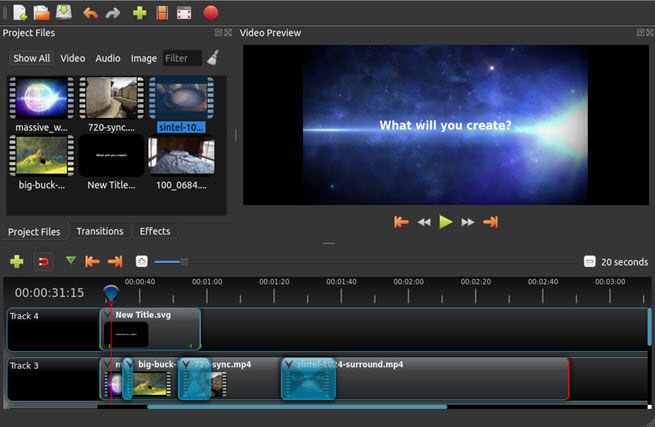
Pros:
- OpenShot is free and open-source, making it accessible to all users.
- Its simple and user-friendly interface makes video editing a breeze, even for beginners.
- The drag-and-drop functionality and keyframe animation feature offer flexibility and creativity.
- Cross-platform compatibility ensures that Linux users can enjoy the benefits of OpenShot.
- Regular updates and a responsive developer team mean that OpenShot is continually improving.
Cons:
- OpenShot is a basic video editor, lacking some advanced features like proxy editing, clip analysis, and speech-to-text.
- Some users have reported that OpenShot can be unstable and slow, especially when dealing with larger projects.
- Compatibility issues with certain formats and codecs may arise, requiring additional troubleshooting.
3. Blender
Blender is actually a free and open source 3D creation suite that includes a video editor. It has been in development since 1995 and has over 9 million downloads on SourceForge.
It has gained popularity among Linux users for several reasons. First, it is a professional and comprehensive video editor that supports a wide range of video formats, codecs, and effects. Whether you're working with AVI, MP4, or even 4K footage, Blender has got you covered.
Second, Blender is not your ordinary video editor. It is a complex and advanced tool that offers a node-based compositor, a motion tracker, a mask editor, and a video sequencer. These features allow you to create stunning visual effects, track objects in your footage, and edit your videos with precision.
When it comes to editing videos, Blender offers impressive features. It supports up to 32 audio and video tracks, allowing you to work with multiple layers of media. Furthermore, Blender provides over 200 video and audio effects, such as transitions, filters, color grading, and keying. With these tools at your disposal, you can take your videos to the next level.
Blender isn't just a video editor, which we have mentioned in the beginning. It also has a built-in 3D animation engine, a sculpting tool, a physics simulator, and even a game engine. This makes Blender a versatile software that can cater to various creative needs.
What we like about Blender best is that it is backed by extensive online documentation, a forum, a wiki, and a bug tracker. The online documentation provides detailed instructions, tutorials, and examples to help you make the most out of Blender's features. The forum and wiki serve as platforms for users to share their knowledge and experiences, while the bug tracker ensures that any issues are promptly addressed.
Lastly, Blender is a versatile and adaptable video editor. It works on Linux, Windows, and Mac OS, making it accessible to users across different platforms. Additionally, Blender has a huge and active community of users and developers who contribute to its continuous improvement and provide support to fellow users.

Pros:
- Blender is free and open source, making it accessible to anyone without breaking the bank.
- It is a professional and comprehensive video editor that offers advanced features.
- Blender's extensive capabilities extend beyond video editing, making it a versatile tool for various creative endeavors.
- It has a large and active community of users and developers who provide support and contribute to its continuous improvement.
Cons:
- Blender has a steep learning curve. Due to its advanced features, it may take some time and effort to fully grasp its capabilities.
- The interface can be overwhelming for beginners. However, with practice and familiarity, it becomes easier to navigate.
- Blender is not optimized specifically for video editing, which means it may not offer the same level of efficiency and performance as dedicated video editing software.
- Due to its extensive features, Blender may require a significant amount of system resources to run smoothly.
4. Shotcut
Shotcut is a free and open-source video editor that is based on the MLT Framework. As a Linux video editor, Shotcut can give you these features:
1. Modern and Flexible Editing Features
One of the standout features of Shotcut is its modern and flexible editing capabilities. Shotcut supports a wide range of video formats, codecs, and effects, making it suitable for all your editing needs. With Shotcut, you can edit videos in various resolutions, including 4K, and apply professional-grade effects and filters to enhance your footage.
2. Customizable and Efficient Interface
Shotcut offers a customizable and efficient interface that allows you to work seamlessly. The software provides a multi-track timeline, enabling you to edit multiple audio and video tracks simultaneously. This feature is particularly useful for creating complex and layered videos. Additionally, Shotcut's dockable interface allows you to arrange and customize the layout to suit your preferences, improving your workflow.
3. Cross-Platform Compatibility and Regular Updates
Shotcut is a cross-platform video editor, ensuring that Linux, Windows, and Mac OS users can all benefit from its features. The software has a regular release cycle, meaning that you can expect updates and improvements on a consistent basis. This dedication to updates demonstrates the responsiveness and commitment of the developer, ensuring that Shotcut remains a reliable and up-to-date editing tool.
4. Impressive Features and Functionality
Shotcut offers a range of features and functionalities that make it an excellent choice for video editing on Linux. Firstly, the software supports up to 15 audio and video tracks, providing ample room for creativity. Additionally, Shotcut boasts over 100 video and audio effects, including transitions, filters, color correction, and keying. These effects allow you to add professional touches to your videos, making them visually appealing and engaging.
Shotcut also includes a built-in audio editor, making it convenient to edit and enhance your video's sound. The proxy editing feature allows you to work with high-resolution files by creating lower-resolution proxies, reducing the strain on your system's resources. Furthermore, Shotcut offers a clip analysis tool, which provides valuable insights into your footage, such as color analysis and loudness levels. Lastly, the batch processing function allows you to apply changes to multiple files simultaneously, saving you time and effort.
5. Support and Resources
Shotcut provides extensive support and resources for its users. The software has a detailed online manual, which serves as a comprehensive guide for both beginners and experienced editors. Additionally, Shotcut offers a forum where users can seek help, share tips and tricks, and engage with the community. The software also has a blog that provides updates, tutorials, and other useful information. Finally, if you find Shotcut valuable, you can support the developer by making a donation through their donation page.
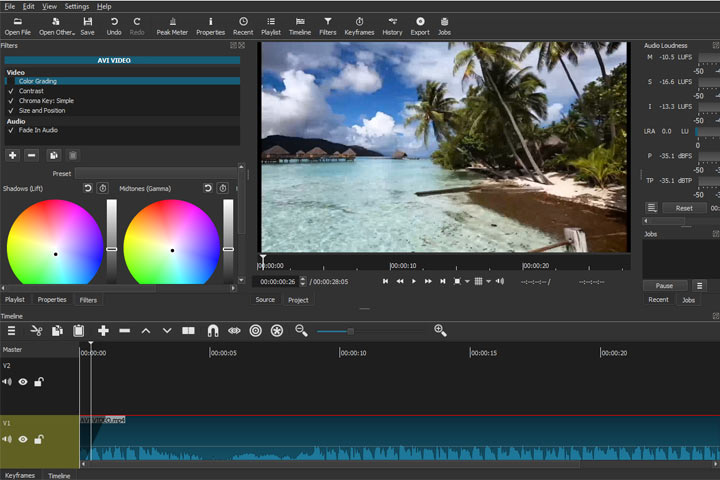
Pros:
- Shotcut is free and open source, making it accessible to all Linux users.
- The software is modern and flexible, supporting a wide range of video formats, codecs, and effects.
- Shotcut offers a customizable and efficient interface, with a multi-track timeline and dockable interface.
- It is a cross-platform video editor that works on Linux, Windows, and Mac OS, providing versatility for users.
Cons:
- Shotcut lacks some advanced features, such as titles, 3D animation, and motion tracking.
- Compatibility issues may arise with certain formats and codecs, requiring additional steps to achieve desired results.
- Some users report occasional crashes and bugs during use.
- The interface of Shotcut can be considered bland in comparison to other video editing software.
5. DaVinci Resolve
Developed by Blackmagic Design, DaVinci Resolve is a professional-grade video editor that offers a wide range of features and tools to help you create stunning videos. In this section, we'll dive into what makes DaVinci Resolve one of the best options for Linux users.
1. A Professional Video Editing Software
DaVinci Resolve is a professional video editing software that has been in development since 2004. Its longevity in the industry is a testament to its reliability and effectiveness. In fact, DaVinci Resolve has been used to edit many award-winning films, including The Avengers, La La Land, and The Martian. With such a prestigious track record, you can trust that DaVinci Resolve will meet your editing needs.
2. Power and Versatility
One of the standout features of DaVinci Resolve is its power and versatility. It supports a wide range of video formats, codecs, and effects, making it suitable for any project. Whether you're working with high-resolution footage or need to apply complex visual effects, DaVinci Resolve can handle it all. With over 250 video and audio effects, such as transitions, filters, color grading, and keying, you'll have endless creative possibilities at your fingertips.
3. Sophisticated and Advanced Tools
DaVinci Resolve is more than just a video editor. It offers a multi-page workflow, a node-based compositor, a color grading tool, and a Fairlight audio editor. These advanced tools allow you to have complete control over every aspect of your video production. Whether you need to fine-tune the color grading, create complex visual effects, or enhance the audio, DaVinci Resolve has you covered.
4. Compatibility and Support
One of the advantages of using DaVinci Resolve is its compatibility with multiple operating systems. It works seamlessly on Linux, Windows, and Mac OS, allowing you to switch between platforms without any hassle. Additionally, DaVinci Resolve has a large and active community of users and developers. This means that you can easily find support, tutorials, and plugins to enhance your editing experience. The software also offers a detailed online manual, a forum, a wiki, and a bug tracker, ensuring that you can find answers to your questions and report any issues.
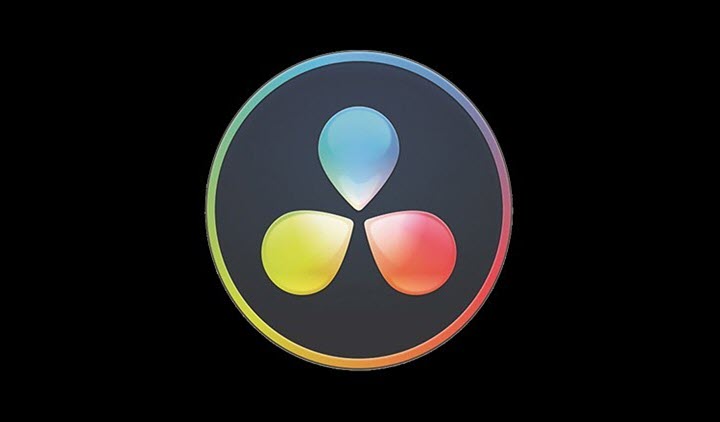
Pros:
- Professional and comprehensive: DaVinci Resolve offers a wide range of features and tools for professional video editing.
- Powerful and versatile: It supports various video formats, codecs, and effects, giving you the flexibility to create any type of video.
- Sophisticated and advanced: With advanced tools like the node-based compositor and color grading tool, you can achieve high-quality results.
- Compatible and supported: DaVinci Resolve works on Linux, Windows, and Mac OS, and has a large community for support.
Cons:
- Steep learning curve: Due to its extensive features, DaVinci Resolve can be overwhelming for beginners. It requires some time and dedication to master.
- Overwhelming interface: The interface of DaVinci Resolve can be intimidating at first, especially for new users. However, with practice, you'll become familiar with its layout and functionality.
- Not free for full features: While DaVinci Resolve offers a free version, some advanced features are only available in the paid Studio version.
- Requires a lot of system resources: Due to its powerful capabilities, DaVinci Resolve can be resource-intensive, requiring a high-performance computer to run smoothly.
6. Lightworks
Developed by EditShare, Lightworks is also a professional-grade video editor that offers a wide range of features and capabilities, like DaVinci Resolve. So let' see what Lightworks can bring to us and how it is different.
1. Powerful and Comprehensive
Lightworks is known for its power and comprehensive set of tools. It supports a wide range of video formats, codecs, and effects, making it suitable for any editing project. Whether you're working on a short film, a documentary, or a music video, Lightworks has the capabilities to meet your needs.
2. Multi-track Timeline and Node-Based Compositor
One of the standout features of Lightworks is its multi-track timeline. This allows you to work with multiple video and audio tracks, giving you the flexibility to create complex edits. Additionally, Lightworks offers a node-based compositor, which allows you to create intricate visual effects and composites.
3. Color Grading and Fairlight Audio Editor
Lightworks also includes a powerful color grading tool, enabling you to fine-tune the look and feel of your videos. With this feature, you can adjust the brightness, contrast, saturation, and more to achieve the desired aesthetic. Additionally, Lightworks offers a Fairlight audio editor, allowing you to mix and enhance the audio in your projects.
4. Compatibility and Community
Lightworks is compatible with Linux, Windows, and Mac OS, making it a versatile choice for users across different operating systems. Furthermore, Lightworks has a large and active community of users and developers. This means that you can find support, tutorials, and resources to help you get the most out of the software.
5. Award-Winning Films Edited with Lightworks
Lightworks has a proven track record in the film industry. It has been used to edit many award-winning films, including The King's Speech, The Wolf of Wall Street, and Pulp Fiction. These films are a testament to the capabilities and quality that Lightworks offers.
6. 500+ Video and Audio Effects
Lightworks comes with over 500 video and audio effects, including transitions, filters, color correction tools, and keying. These effects allow you to add a professional touch to your videos, making them visually stunning and engaging.
7. Additional Features and Support
In addition to its core features, Lightworks offers several other useful tools. It has a built-in titler, which allows you to create titles and captions directly within the software. Lightworks also has a proxy editing feature, which enables you to work with lower-resolution footage for faster and smoother editing. Furthermore, it has a clip analysis tool, which provides insights into the technical aspects of your footage. Lastly, Lightworks supports batch processing, allowing you to automate repetitive tasks and save time.
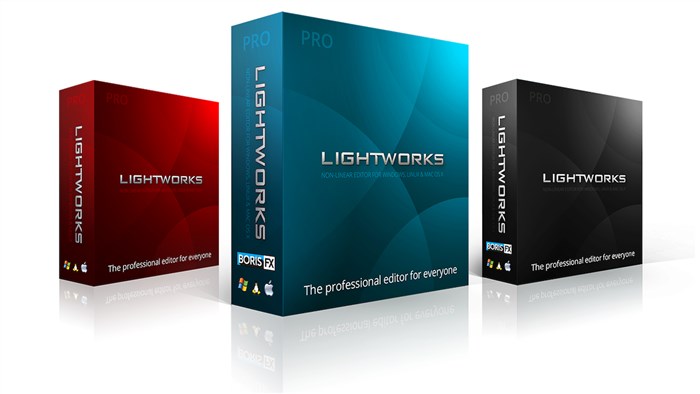
Pros:
- Lightworks is a professional and comprehensive video editing software.
- It offers powerful and versatile features for editing and enhancing your videos.
- Lightworks is a sophisticated and advanced tool with a multi-track timeline, node-based compositor, and color grading capabilities.
- The software is compatible with Linux, Windows, and Mac OS, making it accessible to a wide range of users.
Cons:
- Lightworks has a steep learning curve, especially for beginners.
- The interface can be overwhelming at first, with a lot of features and options to navigate.
- While Lightworks offers a free version, some advanced features are only available with the paid version.
- Lightworks requires a significant amount of system resources, so make sure your computer meets the minimum requirements.
7. Olive
Olive is a free and open source video editor, which was started in 2018 and has gained popularity among the Linux community, with over 500,000 downloads on GitHub.
Olive is designed with simplicity in mind. It features a clean and intuitive interface that makes it easy for beginners to get started with video editing. You don't need to be a professional editor to navigate Olive's interface and start editing your videos. It's perfect for those who are new to video editing or who prefer a straightforward editing experience.
One of the standout features of Olive is its modern and flexible capabilities. It supports a wide range of video formats, codecs, and effects, allowing you to work with your preferred file types and achieve the desired look for your videos. Whether you're editing a home video or a professional project, Olive has the tools you need to create high-quality content.
Olive offers a customizable interface, allowing you to tailor the software to your specific preferences and workflow. You can dock panels, rearrange windows, and even create custom keyboard shortcuts to streamline your editing process. This level of customization helps you work more efficiently, saving you time and effort.
With Olive, you can work with up to 10 audio and video tracks, giving you the flexibility to create complex projects with ease. Additionally, Olive supports hardware acceleration, which leverages your computer's GPU to speed up the editing process. This feature enables smoother playback and faster rendering, improving your overall editing experience.
Another one of the key advantages of Olive is its cross-platform compatibility. It works seamlessly on Linux, Windows, and Mac OS, making it accessible to a wide range of users. Olive also has a regular release cycle and a responsive developer, ensuring that you have access to the latest updates and improvements. This commitment to updates and improvements ensures that Olive remains a reliable and up-to-date video editing solution.

Pros:
- Olive is free and open source, making it accessible to all users without any financial barriers.
- The software offers a modern and flexible editing experience with support for a wide range of formats, codecs, and effects.
- Olive is customizable and efficient, allowing you to tailor the interface to your preferences and work more efficiently.
- It is cross-platform and regularly updated, ensuring that you have access to the latest features and improvements.
Cons:
- Olive is still in the beta stage, which means it may have some bugs and stability issues. However, the regular updates from the developers help address these concerns.
- Some advanced features, such as 3D animation, motion tracking, and multicam editing, are currently not available in Olive. However, the developers are continually working to expand the software's capabilities.
- Like any software, Olive may occasionally experience crashes or technical issues. However, the responsive developer community helps address these issues promptly.
8. Flowblade
Flowblade is a free and open source video editor, which was launched in 2012 and has already garnered over 300,000 downloads on SourceForge. This impressive number speaks to the popularity and trustworthiness of the software.
It is designed to be fast and precise. It's perfect for users who value efficiency and accuracy in their video editing process. With Flowblade, you can expect a lightweight and minimalist editing experience that doesn't compromise on functionality.
One of the standout features of Flowblade is its support for a wide range of video formats, codecs, and effects. Whether you're working with MP4, AVI, MKV, or any other popular format, Flowblade has got you covered. Additionally, you'll have access to over 100 video and audio effects, including transitions, filters, color correction, and keying. This versatility allows you to unleash your creativity and produce professional-looking videos.
Flowblade prides itself on its user-friendly and intuitive interface. It offers a multi-track timeline, a trim view, and a clip monitor, making it easy for both beginners and experienced users to navigate and edit their videos. You'll find that Flowblade provides a smooth and seamless editing experience, allowing you to focus on bringing your vision to life.
Flowblade is not only compatible with Linux, but it also has a large and active community of users and developers. This means that you can rely on ongoing support and updates to ensure a smooth editing experience. If you ever run into any issues or have questions, you can turn to the detailed online manual, forum, wiki, and bug tracker for assistance. The Flowblade community is there to help you every step of the way.
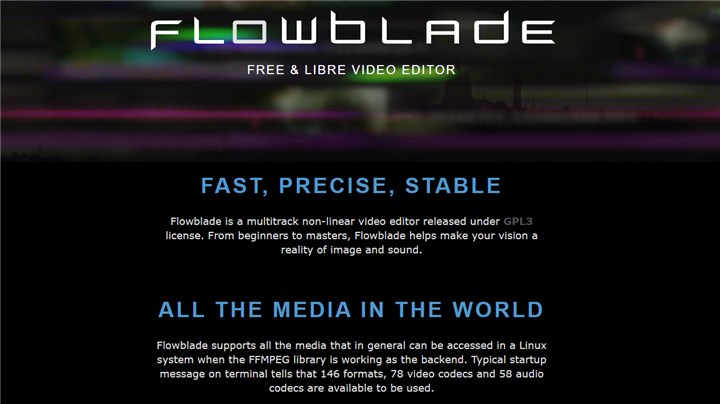
Pros:
- Free and open source: Flowblade won't cost you a dime and allows you to customize it to your liking.
- Lightweight and minimalist: Flowblade is designed to be efficient and fast, ensuring a smooth editing experience.
- User-friendly and intuitive: The interface is easy to navigate, making it accessible for users of all skill levels.
- Compatible and supported: Flowblade works on Linux and has a dedicated community that provides ongoing support and updates.
Cons:
- Limited and basic: Flowblade may not have all the advanced features found in other video editing software, such as 3D animation, motion tracking, and multicam editing.
- Compatibility issues: While Flowblade supports a wide range of formats and codecs, it may have some compatibility issues with certain ones.
- Bland interface: Some users may find the interface to be visually unappealing compared to other video editing software options.
9. Pitivi
Started back in 2004 and since garnered over 200,000 downloads on SourceForge, Pitivi is a free and open source video editor that has gained popularity among Linux users for its user-friendly interface and wide range of features. Whether you're a beginner or an experienced video editor, Pitivi offers a colorful and playful editing environment that makes the editing process enjoyable.
With Pitivi, you can work with a wide range of video formats, ensuring that you can edit your videos without worrying about compatibility issues. Additionally, Pitivi offers over 70 video and audio effects, including transitions, filters, titles, and even chroma key.
Pitivi simplifies the editing process with its multi-track timeline and drag-and-drop interface. This allows you to easily arrange and synchronize your video and audio tracks, making it a breeze to create professional-looking videos. The intuitive interface ensures that even beginners can quickly get up to speed with editing their videos.
Unlike some Linux video editing software that may not offer cross-platform compatibility, Pitivi works on Linux, Windows, and Mac OS. This means that no matter what operating system you're using, you can enjoy the benefits of Pitivi's user-friendly interface and powerful features. Additionally, Pitivi has a regular release cycle, ensuring that you have access to the latest updates and improvements.
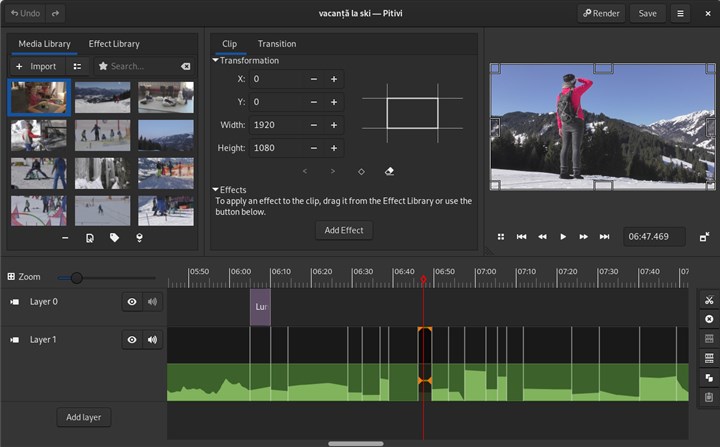
Pros:
- Free and open source: Pitivi is free to download and use, making it accessible to users of all budgets.
- Colorful and playful: The vibrant and playful interface of Pitivi adds a touch of fun to the editing process.
- Beginner-friendly and fun: Pitivi's intuitive interface and drag-and-drop functionality make it easy for beginners to start editing their videos.
- Cross-platform and updated: Pitivi works on multiple operating systems and receives regular updates, ensuring that you have access to the latest features and improvements.
Cons:
- Limited and basic: While Pitivi offers a range of features, it may not have the advanced capabilities of some other video editing software.
- Lacks some features: Pitivi is missing certain features, such as proxy editing, clip analysis, and speech-to-text, which may be important to some users.
- Unstable and slow: Some users have reported stability and performance issues with Pitivi, including slow rendering times.
- Compatibility issues: Pitivi may have compatibility issues with certain video formats and codecs, which can be frustrating for users.
Conclusion
In conclusion, Linux offers a wide range of video editing software options, so you can find the perfect fit for your needs from these 9 options. Whether you're a beginner looking for something simple and easy-to-use, or a professional looking for advanced features, there's something out there for you. So, try out different Linux video editing software options, check the system requirements and specifications, read online reviews and ratings, and watch online tutorials.

